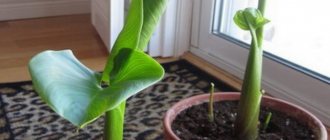Gladioli - flowers beloved by many gardeners require attention. They need to be dug up in time, trimmed, and then stored for gladioli storage in winter. There are many different options for storing gladioli in winter and we will tell you about all of them. We hope you will choose the most suitable method for yourself and save your favorite varieties of gladioli until spring.
To ensure that your gladioli delight you with abundant flowering and large corms, start cutting flowers according to the following scheme:
- Gladioli should be cut when the flowers are partially open.
- The best time to cut a gladiolus flower is when the bottom two flowers have bloomed.
- I cut the peduncles with a sharp knife early in the morning or in the evening so that the remainder of the peduncle is deeply hidden between the remaining leaves, of which there should be at least four on the plant, and which should ensure the further growth and development of the corm. After all, she needs to gain strength to please us with lush blooms next year.
The time when it is best to remove gladioli from the flower bed can be easily calculated. 30 - 50 days should pass after flowering, and then the gladioli can be safely dug up. The above-ground part of the plant should die off during this time, and only then can the gladioli be dug up and trimmed.
After digging, the gladioli are trimmed. And this must be done very carefully! Under no circumstances should you trim, tear off or twist the stems and leaves of gladioli until they die completely. Their death occurs exactly 30 - 50 days after flowering.
How to trim gladioli for storage
The stems of gladioli are cut off, leaving a small stump (0.5 - 1.0 cm) near the corms. I advise you to leave just such a small stump, since by autumn thrips, a very common pest of gladioli, gathers closer to the base of the stem. By pruning shorter, we reduce the possibility of damage to gladioli by thrips during winter storage. Here are the basic rules for trimming gladioli for the winter:
- In adult corms, the roots and the old, mother corm are removed immediately. This reduces the drying time of planting material and prevents the spread of diseases.
- In juvenile bulbs grown from baby bulbs, the roots are only well shortened and removed the next year in preparation for spring planting.
After pruning gladioli for the winter, the corms are washed from the soil and treated in a solution of potassium permanganate (potassium permanganate) 5-10 g per 10 liters of water for 20-25 minutes.
Digging and disinfecting tubers
Gladioli must be removed from the soil very carefully so as not to damage the bulbs.
- Using a shovel or pitchfork, stepping back from the bush about 20 cm, dig up the bulb with the children.
- Use a fork to lift the clod of earth along with the root system and pull the plant by the stem. This way you will pull the bulbs out of the ground without damage.
- During the growing season, the mother gladiolus bulb produces many children of different sizes. To prevent plant children from getting lost, after digging, lay the family out on cloth or film.
- The stem is cut with sharp pruning shears at a height of 5 cm from the top of the bulb.
Digging is carried out in dry, sunny weather; it is advisable that the soil is free of excess moisture, otherwise it will be difficult to remove the plant from the soil.
Mother gladioli bulbs with babies
There is no need to forcibly tear the babies away from the mother’s bulb and clean off the soil. Place the dug-out families in a dry, sunny place to dry. After drying, the earth will fall off on its own. Do not peel the husks from the bulbs under any circumstances, otherwise it will be difficult to preserve the gladioli bulbs. The husk has a protective function and protects the tuber from damage.
After this, the family is divided separately into mother bulbs and children. The smallest children, as well as those that float to the surface during soaking, are thrown away. The corms should be disinfected in the Fitosporin solution, and damaged or diseased bulbs should be removed. After soaking, be sure to dry.
How to dry gladioli before storing
Drying of gladioli begins as early as possible, immediately after digging.
- The corms are placed in bags according to variety and dried in the open air for 1 to 3 days, if possible. After which the gladioli are brought into the house and dried at a temperature of 25-30° for 15 days.
- And then, they are dried at a temperature of 20-22° for 30-35 days. For better drying, it is useful to stir up the planting material at least 2 times a day. The good condition of planting material during winter storage depends on good drying.
Poorly dried corms, due to increased humidity under the scales, begin to develop fungal and bacterial diseases, are poorly stored and die. Therefore, it is necessary to store only well-dried and healthy corms without signs of disease. All gladioli corms with signs of disease and cracked children are discarded.
If there is a small variety or the gladiolus variety is very valuable, and the damage is small, then you can cut out the damaged areas to healthy tissue and cover it with brilliant green (brilliant green) or treat it with a strong solution of potassium permanganate.
Treatment of gladioli in the fall - before storing the gladioli in winter, treat them with Maxim against rot and pests.
Choosing a place
If you live in a private house, the ideal place to store gladioli is the cellar. It should be dry, cool, but not freezing. But if you store apples in the basement, you cannot put flower tubers there - they will rot. An attic, barn, storage room or canopy is also suitable. The optimal storage temperature for planting material is 5-10°C.
If you live in an apartment, finding a place is more difficult. It is not recommended to store gladioli in the refrigerator: the humidity there is too high, due to which the bulbs will germinate within a month. Any cool room away from batteries is suitable for storage. If the window sills are cold, they will also work. A cool, but not freezing, glazed balcony in winter is also suitable.
Preparing and storing gladioli in winter is not an easy task that requires care and responsibility. Regularly check the temperature of the room in which the tubers lie and throw out diseased ones in a timely manner so that the bright flowers will delight you with their attractiveness in the summer.
How to save gladioli bulbs affected by thrips?
In winter, it is advisable to periodically inspect the corms of gladioli in order to promptly identify the presence of pests in them. The main enemy of gladioli is thrips, a skilled camouflage plant. During sorting, bulbs infected with the pest may appear completely healthy. If you notice traces of insect bites (small black dots) on the bulbs, do not despair - all is not lost. You can get rid of thrips. There are several ways to provide first aid to infected bulbs. We will present three of the most effective of them.
- Alcohol. Some gardeners advise placing the bulbs in a glass jar, putting a cotton swab generously moistened with alcohol inside and sealing tightly. After a few hours, you should notice that the insects have emerged from under the scales of the bulb and, most likely, died. If necessary, you can repeat the procedure.
- Decis solution. Two ampoules of the substance are dissolved in 10 liters of warm water. The bulbs are left in the solution for 30-40 minutes. Then dry again.
- Actellik solution. The substance is diluted with water in a ratio of 2 g per liter. The bulbs are immersed in the solution for 5 minutes. After this, the bulbs are dried again at a temperature of 20-25°C.
When to take bulbs out of the refrigerator to sprout?
Gladioli should be removed from the refrigerator approximately a month before the date of planned planting in the ground. It is this time that is necessary for normalization of the flow of biological processes inside the biomaterial and successful “awakening”.
Planting in the middle zone should be planned for early April; accordingly, it is recommended to remove gladioli bulbs from the refrigerator in early to mid-March. Sometimes 20 days are enough for the formation of full-fledged arrows and the pipping of a bud.
Advice! Gladiolus bulbs should be buried 7-10 cm. It is better to plant them. When the stable air temperature in the morning reaches 10 degrees.
After removing the bulbs from the refrigerator, they should be prepared for planting as follows:
- The bulb should be freed from scales and examined. The surface of high-quality planting material should be shiny and pale yellow or cream in color.
- The root embryos should hatch on the surface; they are white and look like dense buds.
- Shrunken and wrinkled specimens should be planted separately, otherwise they may affect healthy specimens.
- If there are brown or bright crimson dots on the bulb, they should be cut off and then treated with a preparation to prevent rotting processes.
- The bulbs should be placed in cardboard boxes and the date of germination should be marked. After 2-3 weeks, the dormant buds should hatch. It is worth planting the bulbs in the ground when the sprout reaches 4 cm in height. He should get stronger.
The process of storing gladioli bulbs in the refrigerator in the winter is simple, and if certain germination rules are followed, the flower harvest will be rich.
Alternative options
In order for gladioli bulbs to retain their vitality and delight with their lush color in the spring, it is necessary to observe optimal storage conditions : low air temperature and high humidity.
There are several options for how, in addition to the refrigerator, to organize storage of bulbs in the winter at home.
Waxing
Coating gladioli bulbs with paraffin is a reliable way to preserve planting material in your apartment until spring. The paraffin shell reliably protects the bulbs from drying out and blocks the growth process.
Algorithm of actions:
- A paraffin candle is heated in a water bath.
- A gladiolus bulb is dipped into melted paraffin (temperature no higher than +70°C), after which it is immediately transferred to cold water.
During the waxing process, it is necessary to ensure that the bulb is completely covered with an even layer of wax. Otherwise, air penetrating through the cracks can cause the tuber to dry out.
To wash off the paraffin, just hold the onion in warm water for a few minutes. Attention: do not brush off the wax; this may damage the gladiolus tuber.
On a glazed loggia or balcony
A good place to store gladioli bulbs in an apartment in winter is a covered loggia. Planting material is sorted, laid out in a thin layer in cardboard boxes and placed on a stool or table. A good place is the window sill of a wooden window frame.
During storage, the required air temperature in the loggia is maintained by opening the window or doors to the room. Regular ventilation helps maintain the required level of air humidity .
During prolonged winter frosts, boxes with flower bulbs are covered with thick woolen rags and moved closer to the balcony door.
Never place boxes with gladioli bulbs on the concrete floor of the loggia (there is a high probability of freezing the planting material).
It is strictly forbidden to store gladioli bulbs:
- in the bathroom (high humidity is the main cause of rotting of tubers);
- without husks (protective dry leaves can be removed from the bulbs only after drying, otherwise the risk of plant infection increases sharply);
- in sealed packaging bags (lack of ventilation during storage is the first step to rotting of the gladiolus bulb);
- in direct sunlight (the sun dries out gladioli tubers, making them unsuitable for planting).
Never store assorted gladioli bulbs in the same container. Firstly, when planting, it will be simply impossible to figure out which variety is where, and secondly, the close contact of healthy and rot-infected tubers leads to rapid deterioration of all seed material.
Protection of tubers from diseases and pests
During wintering of planting material, the most dangerous thing that can harm the bulbs is thrips, as well as various molds and rots. It is almost impossible to detect the presence of thrips immediately. This small pest hides inside the corm under the husk, but at the initial stage the tuber looks completely healthy.
Thrips on bulbs
Thrips suck the juice from the tuber, which leads to its drying out and subsequently to death. If you suddenly notice round spots, bite marks on the bulbs, and yellow dust is pouring out of it, it means thrips are at work. The damaged tuber is thrown away, and the rest are treated with Actellik or other drugs. After processing, the planting material is dried.
On a note! It is impossible to immediately detect thrips damage, so treatment of gladioli bulbs before wintering is mandatory.
If they are not dried properly, mold may form on the bulbs, which will lead to their death if not noticed in time. Therefore, be sure to review your stored plants monthly. At the first signs of mold, treat the gladioli with Fundazol, and then dry thoroughly. The corm should remain hard, but not shriveled; if it becomes soft, it means it has frozen or rotted. There are proven folk methods for protecting corms in winter.
Advice! Place a few cloves of garlic and dry mint in the boxes with gladioli; this will protect them from the development of fungal diseases.
They also use a method of disinfection with a solution of hydrogen peroxide : 10 ml of peroxide per 100 ml of water, keep the bulbs in this solution for up to 12 hours.
Disinfection of gladioli bulbs
After winter, the bulbs may shrink a little, seem to dry out, this is a normal process, because they lose moisture. To restore the water balance in the tubers, they are wrapped in damp cloth for a day. To speed up plant growth, tubers can be soaked in Epin or Zircon . This will stimulate the growth of the root system, and the plant will be stronger. A weak specimen of the tuber can be immersed in a urea solution . Nitrogen fertilizer will give strength to the flower. Do this immediately before landing, not earlier.











